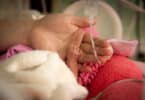Mothers and birthing parents in Canada are at a significant risk of injury in forceps and vacuum deliveries, with as many as one in four cases resulting in severe harm, according to a recent study published in the BMJ. The study, conducted by a team of experts including epidemiologists, obstetricians, urogynecologists, and community advocates from Canada and Sweden, analyzed more than 10 years of evidence and found that Canada has the highest rate of maternal trauma after births involving these tools compared to other high-income countries.
Lead author Giulia Muraca from McMaster University highlighted that little effort has been made to address this issue in Canada, as it is often overlooked or dismissed as a normal part of childbirth. The study emphasizes the need for a national shift towards increased recognition, transparency, and action to inform patients about the risks and prevent future injuries.
Operative vaginal deliveries, which involve the use of forceps or vacuum assistance when labor stalls, are often recommended as alternatives to C-sections. However, data on maternal and neonatal injury and death suggests that there is no clear advantage to these deliveries over C-sections. In fact, approximately one in four forceps deliveries and one in eight vacuum deliveries in Canada result in severe injuries such as perineal and cervical lacerations.
The study also addresses the impact on infants, revealing that one in every 105 infants delivered using forceps or vacuum in Canada experiences some form of trauma. The most common injury among infants is brachial plexus injury, which can lead to paralysis in the arm. Some injuries are severe enough to be fatal.
The analysis suggests that Canada’s high injury rates are influenced by cultural factors. The use of forceps and vacuum instruments in delivery is more common in English-speaking countries, and this practice is a remnant of the British obstetric training model. While the safety of C-sections has improved, Canada has been slower to adapt its obstetric culture.
“So a lot of the obstetricians of the previous generation are really well trained in operative vaginal delivery because at that time it was just a prolific clinical option and there was less safety around caesarean delivery,” Muraca told CTV News.
The research team notes that methods that can be used alongside forceps and vacuum deliveries to reduce the risk of injury, such as specific incisions during childbirth. These methods are less commonly practiced in Canada compared to other countries.
Another issue identified in Canada is the lack of prioritization of maternal well-being after delivery. Muraca emphasizes that this is not due to individual doctors’ attitudes, but rather a systemic cultural characteristic of medicine in Canada. To address these issues, greater awareness, recognition, and initiatives to reduce maternal trauma are needed.
“We have not prioritized preventing maternal trauma. It’s been demoted in our hierarchy of maternal morbidity and these high rates of trauma have been normalized,” she said. “If we’re not interested in acknowledging, recognizing or reducing maternal trauma, then we’re going to continue to use these instruments without initiatives to ensure improved awareness and safety.”
Complications arising from these injuries, such as pelvic pain and sexual problems, are often not discussed due to embarrassment and stigma. The study emphasizes the importance of addressing these issues in obstetric medicine to ensure improved awareness and safety for patients.
More Childbirth News:







